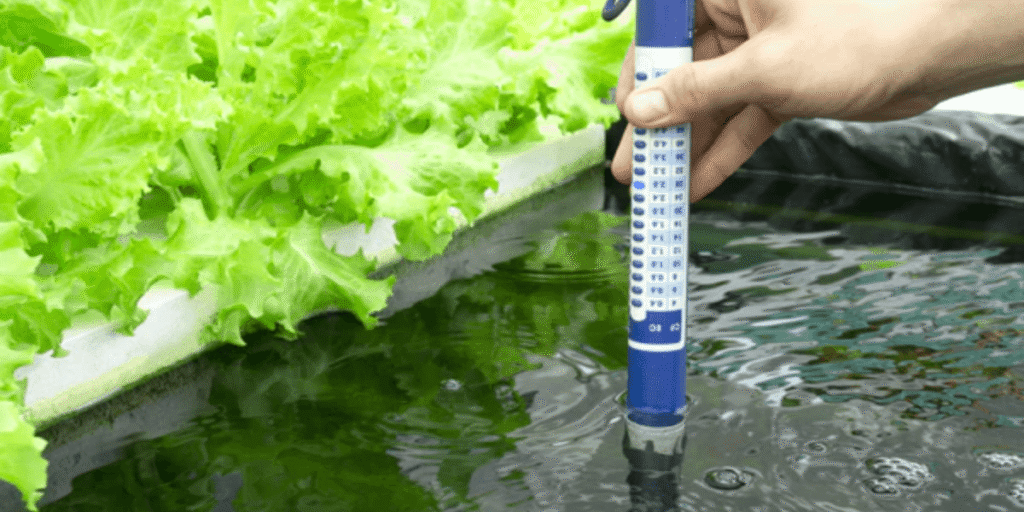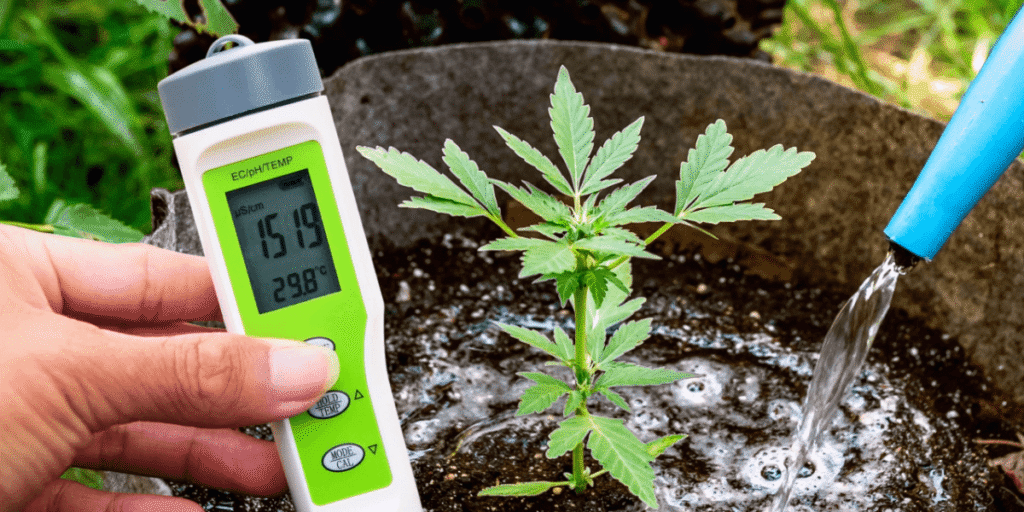Water quality in hydroponics can make or break your garden. Have you ever wondered why some hydroponic setups thrive while others struggle? In hydroponics, water is not just a medium. It carries all the nutrients your plants need and directly affects their growth and health. Paying attention to water quality from the start ensures stronger roots, healthier leaves, and higher yields. This sets the stage for success before any problems even appear.
Understanding Water Quality in Hydroponic
Water quality in hydroponic is truly the foundation of a successful garden. Unlike soil, where nutrients are somewhat buffered, water carries everything your plants need directly to their roots. One of the first things most growers pay attention to is pH, because it has a huge impact on how well plants can take up nutrients. When the pH drifts too high, important elements like iron and manganese become less available, and you may notice older leaves turning yellow. On the other hand, if the pH drops too low, calcium and magnesium absorption slows down, which can quickly lead to weak stems, tip burn, or slow growth.
Paying attention to pH is just the start. Good water quality also means keeping an eye on other factors like nutrient concentration, dissolved oxygen, and temperature. When all these aspects are in balance, your plants grow stronger, healthier, and more productive.
Optimal Water Parameters for Hydroponic Plants
Every crop has its own comfort zone when it comes to water quality, and these numbers change as the plants grow.
Lettuce is happiest when the pH is between 5.8 and 6.2, with a gentle EC of 0.8 to 1.2. The water should stay cool, around 18 to 22 degrees, because lettuce thrives in these conditions. If it gets too warm, the plants bolt quickly.
Tomatoes handle a wider pH range, from 5.5 to 6.5. They like a stronger nutrient mix, usually between 2.0 and 3.5 EC. Warmer water, in the low twenties, supports strong roots and better fruit production.
Strawberries fall in between. They prefer a pH of 5.5 to 6.2 and a moderate EC of 1.0 to 1.4. Cooler water, similar to lettuce, around 18 to 22 degrees, works best for them.
The key for all these plants is consistency. Keeping pH, EC, and temperature steady encourages steady growth, vibrant color, and fewer stress signs. This consistent care has a big impact on both yield and quality.
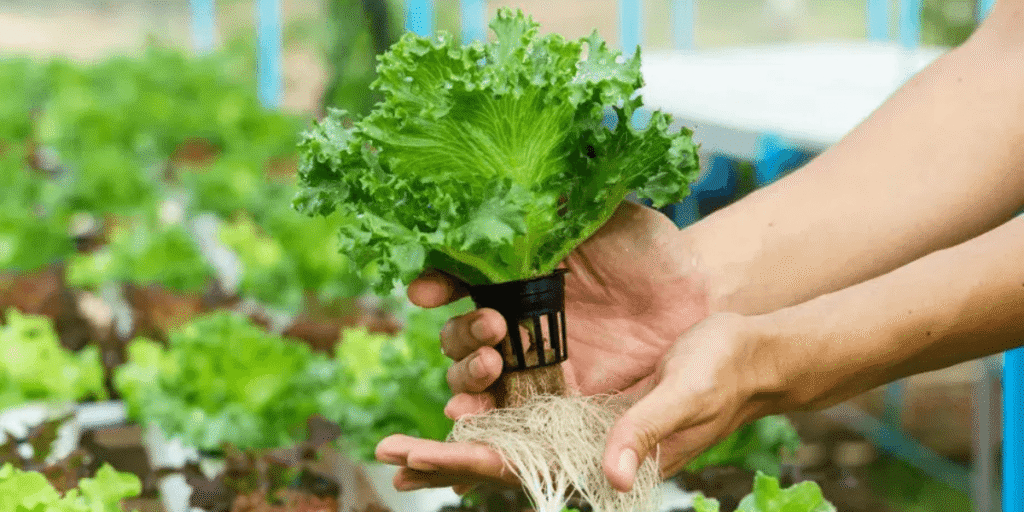
How pH Influences Nutrient Absorption in Hydroponics
One thing many beginners don’t realize is that different nutrients become available at different pH levels. When the solution is a little more acidic, elements like iron and manganese are easier for plants to take up. That is why yellowing leaves often appear if the pH drifts too high.
On the other hand, if the pH drops too low, calcium and magnesium uptake slows down. This can quickly show up as weak stems, tip burn, or poor fruit quality. The goal is not just hitting one number, but keeping a balance where most nutrients are available at the same time.
A simple chart showing nutrient availability across the pH scale can make this much clearer than words alone. You can see how the lines widen or narrow for each element depending on the pH. Keeping that picture in mind makes it easier to understand why daily monitoring and small adjustments matter. Instead of reacting to problems after they appear, you are giving your plants the conditions they need from the start.
Recommended Frequency for Hydroponic Water Testing
One of the most important things to understand in hydroponics is that water testing is not a one-time task. For most growers, it makes sense to check pH and EC every day. These values can shift quickly, and plants respond almost immediately.
TDS and water temperature can be checked less often, maybe once a week. This helps ensure the solution stays balanced and the roots remain comfortable. Once a month, it is a good idea to test for contaminants or microbial activity. This precaution helps catch problems before they affect your plants.
More experienced growers often take it a step further with continuous monitoring systems. Digital sensors provide real-time feedback, making it easier to maintain optimal water conditions without manually checking every day.
Essential Tools for Measuring Hydroponic Nutrient Solutions
When it comes to keeping your water in check, having the right tools makes all the difference. A pH meter is the obvious starting point. It tells you exactly how acidic or alkaline your solution is, which directly affects nutrient uptake.
An EC meter is the next essential tool. It shows how strong your nutrient mix is, helping you avoid underfeeding or overfeeding your plants. Some growers also keep a TDS meter on hand. It provides a general idea of total minerals in the water, even if it is not as precise as EC.
For those who want to take their system to the next level, a dissolved oxygen meter is invaluable. It measures how much oxygen is available to the roots, which is crucial for preventing stress and root diseases. Using these tools regularly makes it much easier to stay on top of water quality and keep your plants thriving.
Controlling Microbes and Algae in Hydroponic Systems
One thing that surprises many beginners is how easily water can become a breeding ground for harmful microbes and algae. Pathogens like Pythium can sneak in and cause root rot before you even notice. Algae can grow quickly, stealing nutrients and oxygen that your plants need.
There are a few ways to keep things under control. Some growers use UV sterilizers or ozone treatments to kill unwanted microbes. Covering reservoirs so light cannot reach the water and ensuring proper aeration helps prevent algae. Others rely on safe fungicides or introduce beneficial microbes that outcompete harmful ones.
The key is to be proactive rather than wait for problems to appear. Once roots are infected, it becomes much harder to fix the issue.
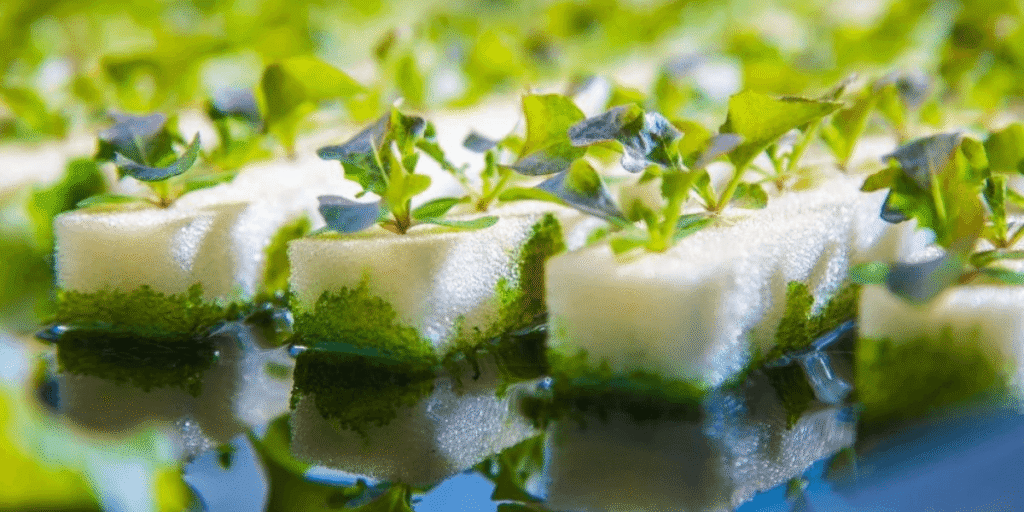
Troubleshooting Common Issues with Hydroponic Water
When something seems off with your plants, water is often the first thing to check. If the pH is out of balance, a quick adjustment using pH up or down solutions usually helps bring it back on track.
If the EC is too low, the plants probably need more nutrients. It is best to add them gradually to avoid shocking the roots. On the other hand, if the EC is too high, diluting the solution with clean water is usually the easiest fix.
Low oxygen levels can stress roots. Increasing aeration with air stones or pumps often makes a big difference. If the water temperature gets too high, especially in summer, using chillers or providing shade can help cool things down.
The key is to spot problems early and make small adjustments instead of waiting until plants show serious stress.
Selecting Safe and Effective Water Sources for Hydroponics
Choosing the right water source can make a big difference in how your hydroponic garden performs. Tap water is easy to get and convenient, but it often contains chlorine or minerals that can build up over time and affect nutrient balance. Reverse osmosis water is much purer, which gives you a clean slate, but you need to add back the right minerals so your plants get everything they need. Rainwater is naturally soft and gentle on plants, but depending on where you live, it might carry dust, debris, or other contaminants, so it is a good idea to filter it before using it in your system. In the end, it is all about knowing what is in your water and adjusting it to suit your plants.
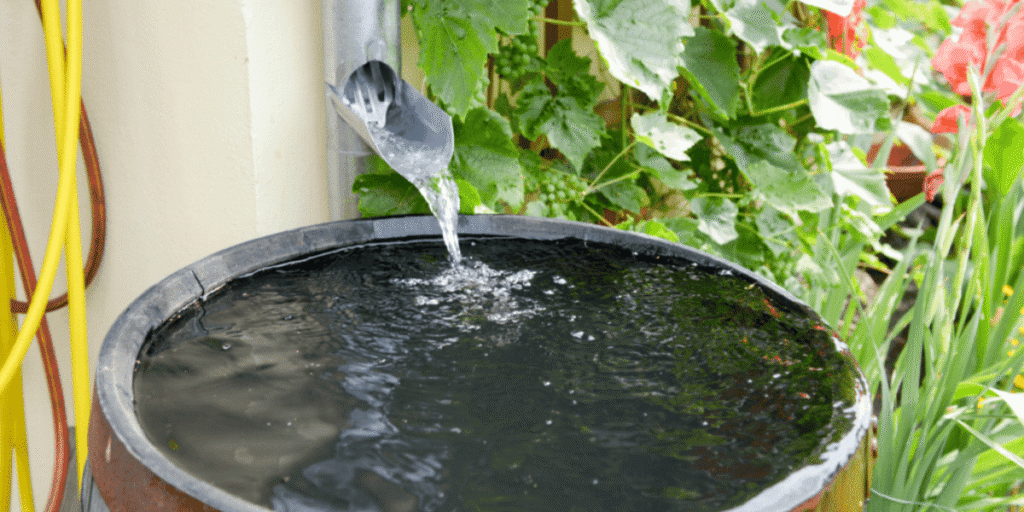
Managing Water in Recirculating Hydroponic Systems
When you are running a recirculating hydroponic system, it is easy for salts and leftover nutrients to build up over time, and that can stress your plants if you are not paying attention. A simple habit that helps a lot is topping up the system regularly with clean water to keep the balance steady. Every week or two, it is also a good idea to flush the system and replace the solution entirely, which helps prevent any unwanted accumulation. On top of that, keeping an eye on nutrient levels and checking for any imbalances means you can catch small problems before they become big ones, and your plants stay healthy and productive throughout the cycle.
Water Quality Considerations for Organic Hydroponic Gardens
If you are experimenting with organic hydroponics, the water behaves a little differently compared to conventional systems. Using things like compost teas or fish emulsions can make the pH swing more unpredictably, so you have to keep a closer eye on it. On the bright side, these natural inputs encourage beneficial microbes in the water and around the roots, which can make your plants more resilient and help them fight off some diseases on their own. Because of these changes, it usually means checking the water more often and adjusting nutrients or pH more frequently, but many growers find the extra attention worth it for the healthier, more flavorful crops they get in return.
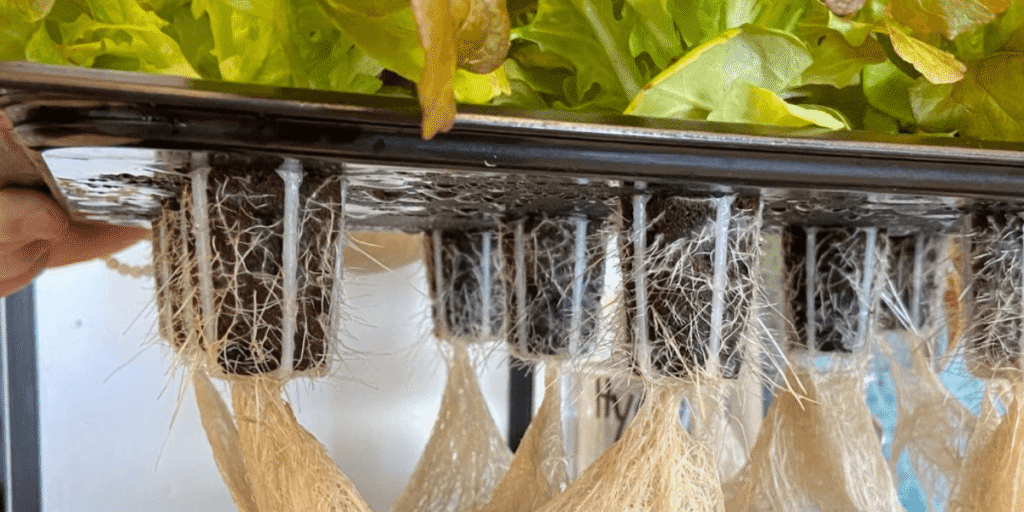
Hydroponic Water QA: Answers to Common Questions
Q1: How often should I change my nutrient solution?
For most indoor hydroponic setups, replacing it every one to two weeks works well, but it depends on how quickly your EC and pH are changing. Many growers check daily and top up with fresh water or nutrients as needed rather than waiting for the full replacement.
Q2: Can I use tap or bottled water for hydroponics?
Yes, but always test it first. Some tap water has chlorine or high mineral content, and some bottled water can be too soft or slightly alkaline. Adjusting pH and adding nutrients ensures your plants get what they need.
Q3: What should I do if algae start growing in my reservoir?
Algae can steal nutrients and oxygen from your plants. Cover your tank to block light, clean it regularly, and make sure the water circulates and is aerated properly to keep algae under control.
Q4: How important is water temperature?
Water that is too warm or too cold affects root health and nutrient uptake. Most leafy greens prefer 18 to 22 degrees Celsius, while fruiting plants like tomatoes or cucumbers are comfortable around 24 degrees. If the water gets too warm, consider shading or cooling methods.
Q5: How do I know if my plants are suffering from low oxygen in the water?
Roots that are oxygen-starved often turn dark or slimy, and growth slows down. Adding air stones or pumps, increasing water movement, and keeping the solution cool helps maintain healthy oxygen levels for your roots.
Maintaining Healthy Water for Successful Hydroponics
Water quality really is the backbone of any successful hydroponic setup. Every factor, from pH and nutrient concentration to dissolved oxygen and water temperature, directly affects how well your plants can grow. Even in advanced recirculating systems, it is easy to let small imbalances slip through, so staying on top of the water is just as important as checking the plants themselves. The key is consistency testing regularly, making small adjustments when needed, and observing how the plants respond. When you take the time to manage water properly, you will notice healthier roots, stronger stems, and more vigorous growth overall. It may take a little extra effort, but the results are worth it, and over time it becomes second nature to keep your system balanced and your plants thriving.
Call to Action: Improve Your Hydroponic Water Management
Take Charge of Your Hydroponic Garden’s Water Quality.
Even the best hydroponic setup can run into trouble if water conditions aren’t just right. Small shifts in pH, nutrients, or temperature can quietly stress your plants before you even notice. The good news is that with a few reliable tools and simple daily checks, you can stay ahead and keep your plants happy and productive. Monitoring pH, EC, dissolved oxygen, and water temperature regularly and making small adjustments when needed will help your roots stay strong and your leaves stay vibrant.
Greenfuturehydro offers everything you need to make water management easy. From pH meters and EC testers to dissolved oxygen meters and full nutrient kits, our tools help you keep your hydroponic system balanced and healthy.
If you ever need advice or guidance, we’re just an email or phone call away. Reach out at info@greenfuturehydro.com or call +86 13487543942 and our team will be happy to help.
For more tips, tutorials, and to connect with hydroponic enthusiasts worldwide, follow us on Instagram at @Greenfuturehydro. Let’s make sure your plants thrive and your garden reaches its full potential.
Related Articles on Hydroponic Water and Nutrient Solutions
- How to Minimize Water-Borne Diseases in Hydroponics
- 9 Common Mistakes to Avoid in Hydroponic Gardening
- Guide to Growing Hydroponic Plants in Bulk
- From Seed to Table: “Greenfuturehydro” Hydroponic Vegetable Journey
- Hydroponic System Maintenance: Tips and Tricks
- Your Hydroponic System Maintenance Guide
- The Basics of Hydroponic Plant Care
